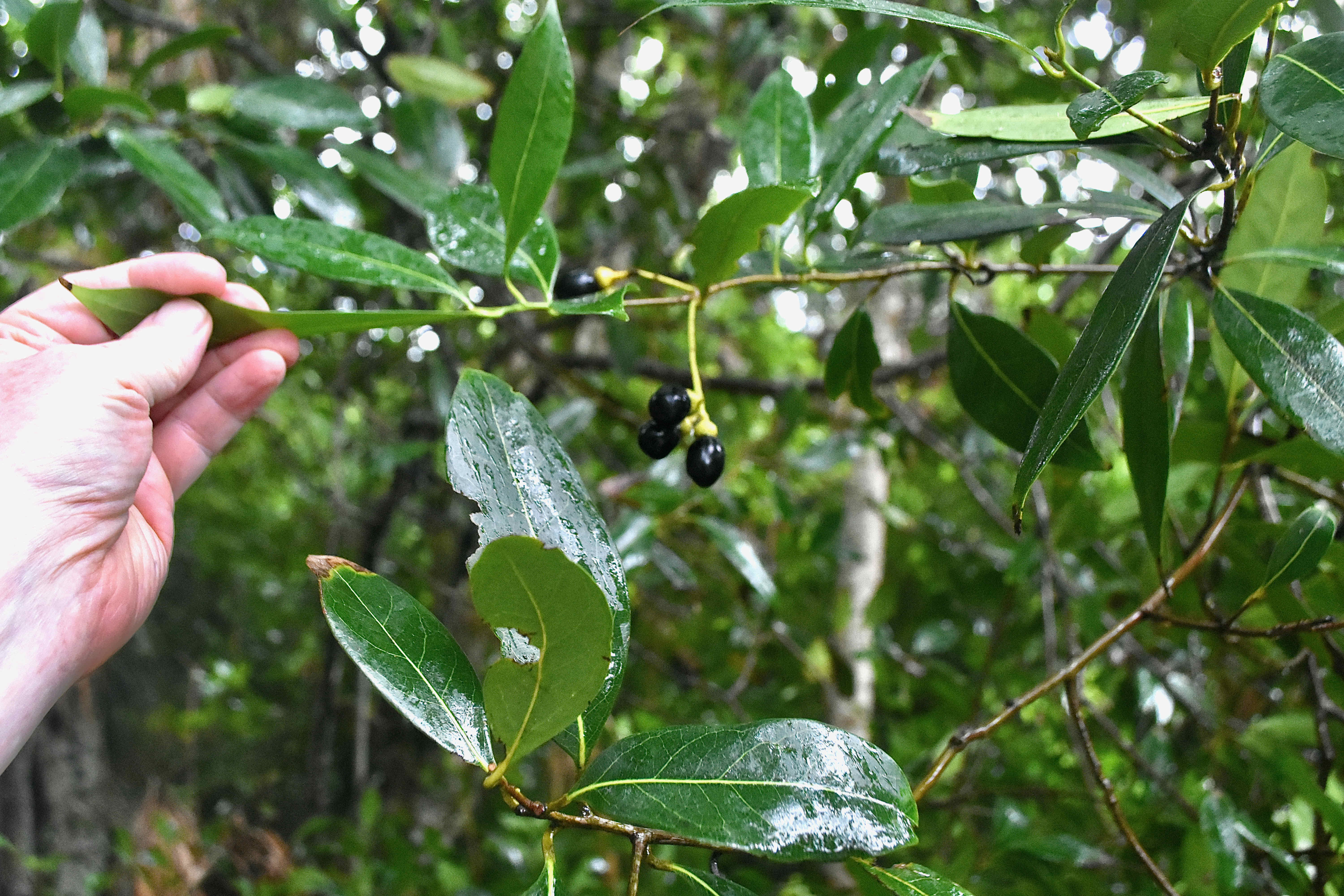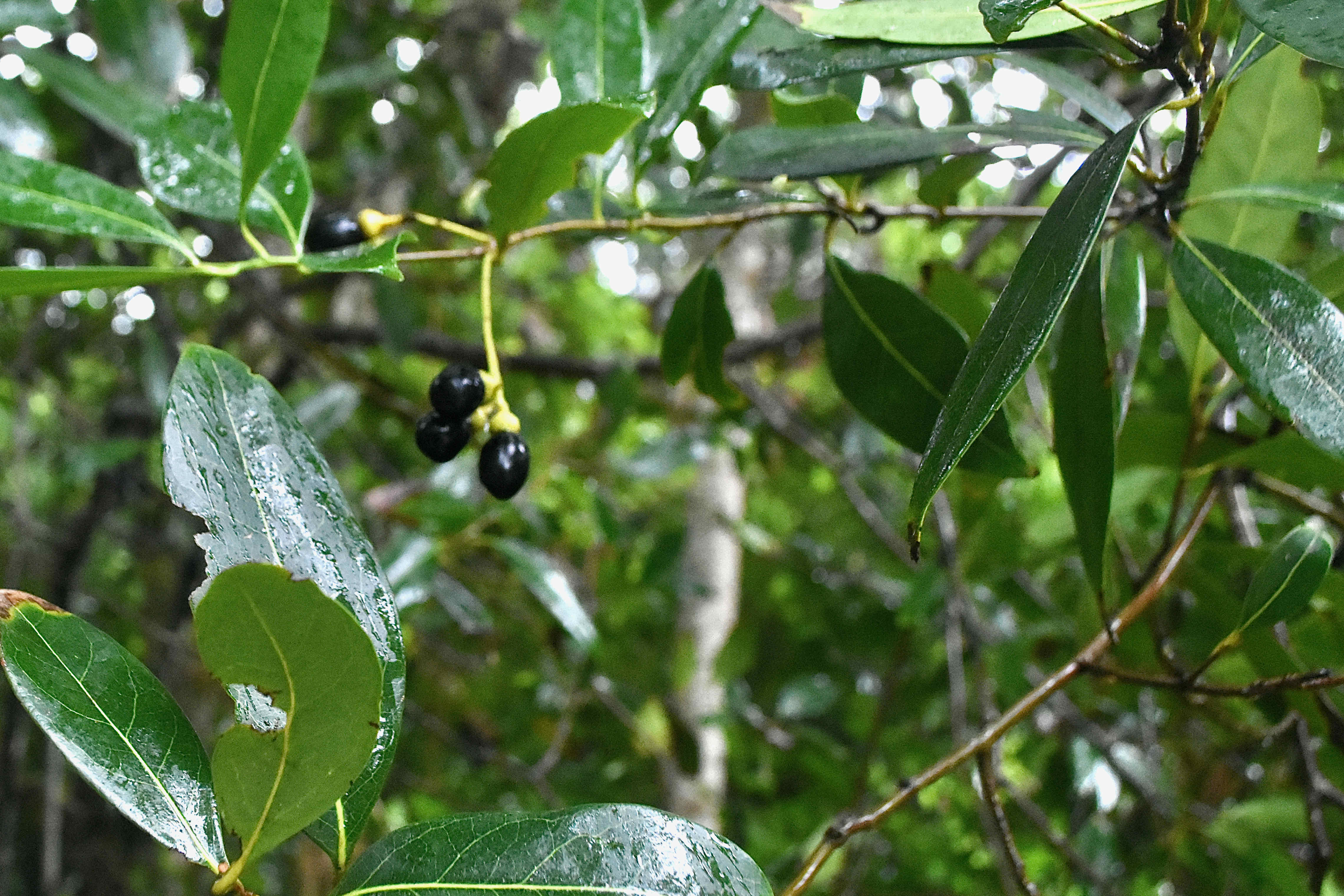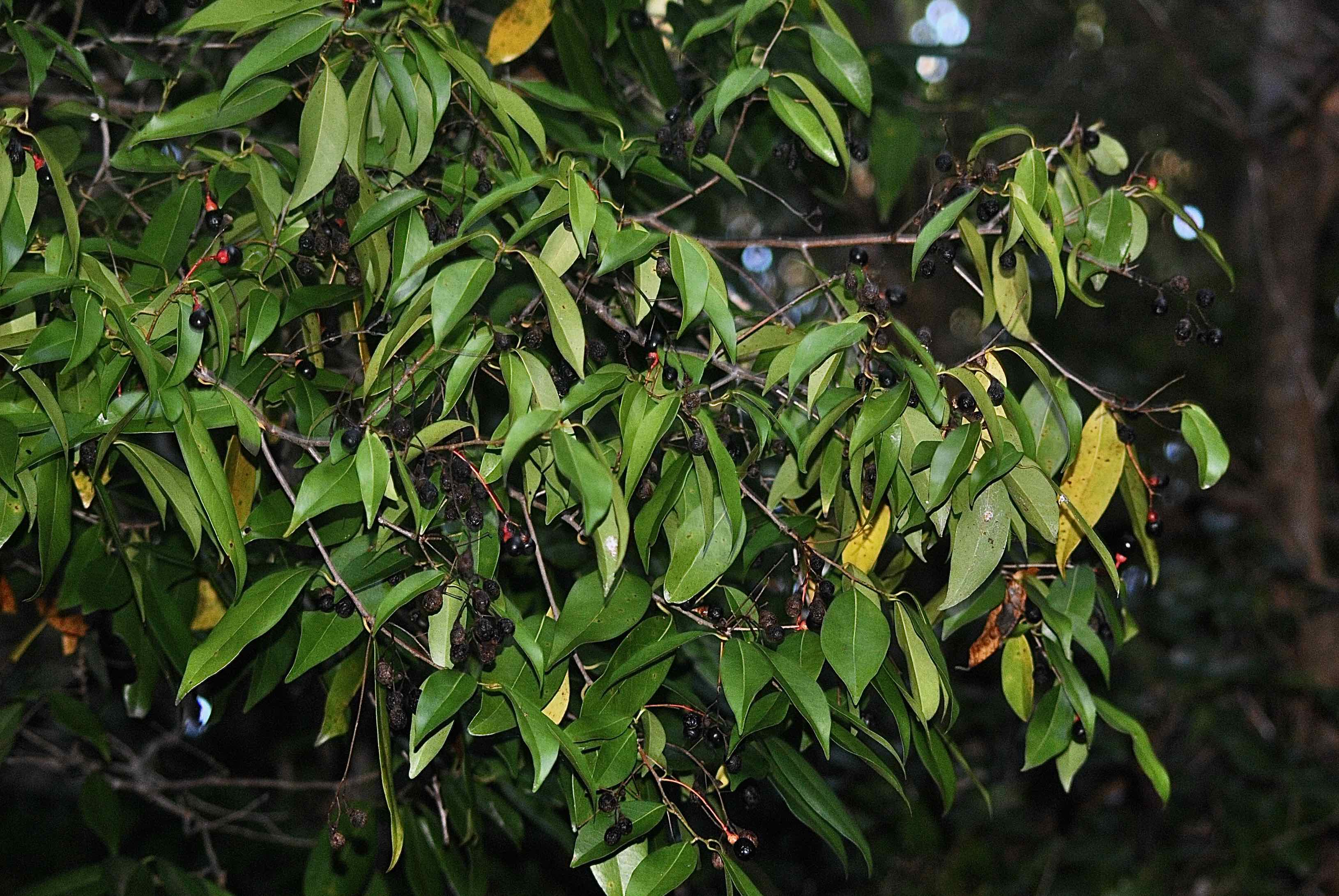
Lancewood, photographed at Gumbo Limbo Nature Center, Boca Raton, Palm Beach County, in November 2018.
It’s not hard to imagine how lancewood, Nectandra coriacea, got its name: the trunks of the tree are long and straight, the perfect wood to make a lance, or spear. Even the leaves are shaped like the tip of a spear.
One bit of a surprise: the wood is also good for making bows.
Lancewood is a Florida native, found only in Florida among the 50 states. Its range includes coastal counties from Collier on the Gulf to Volusia on the Atlantic, plus Highlands northwest of Lake Okeechobee. The U.S. Department Agriculture includes Hillsborough County within the range; the Atlas of Florida Vascular Plants does not. Lancewood is also found in the Caribbean, Mexico and Central America.
It’s commonly found in the canopy or understory of coastal hammocks, but, as its distribution range indicates, it can be found inland as well.
It is a small tree, reaching 20 to 30 feet in the air, with a round and narrow crown. The trunks are straight but often grow at a slight angle.
Leaves are simple, two to six inches long and narrow, lance-shaped to slightly elliptical, dark green above, a lighter shade of green underneath, smooth to the touch and arranged alternately along the stem. Both the apex (end) and the base of the leaf are sharply pointed. The leaves are aromatic when crushed, as is typical with members of lancewood’s botanical family.

The bark is gray on young trees, turning a dark brown as they mature and becoming “warty.” The outter wood is light brown, the heartwood a dark brown. The wood is also oily and burns easily, the inspiration for some of its other common names, listed below.
Lancewood blooms spring into late fall; the flowers are an off white, appearing in clusters at the branches. The fruit is small and berry-like, growing on a red stem that looks like a golf tee. Some liken the looks of immature fruit to an avocado in miniature — not quite coincidental, since lancewood and avocado are members of the same family. The fruit turns a deep red, almost black, when ripe.
Birds and small mammals eat the fruit, humans not so much. According to the late Florida Atlantic University Professor Daniel Austin, fruit dropped from the tree can produce “a small forest of seedlings.” Most will die but on the other hand, if one finds a “light gap” created by the demise of another tree, it will grow and mature quickly. On the other hand, its life will be short by tree standards, a couple of decades, maybe.
All in all, it’s an attractive tree, used in landscaping as a specimen tree or, with its dense foliage, to create a buffer. Seminoles found the straight wood of lancewood useful for making spears while strong enough and flexible enough for making bows. The wood is also used in cabinet-making.
Other common names include black torch, bastard torch and sweet torchwood. It is a member of Lauraceae, the laurel family.
Gumbo Limbo Nature Center



